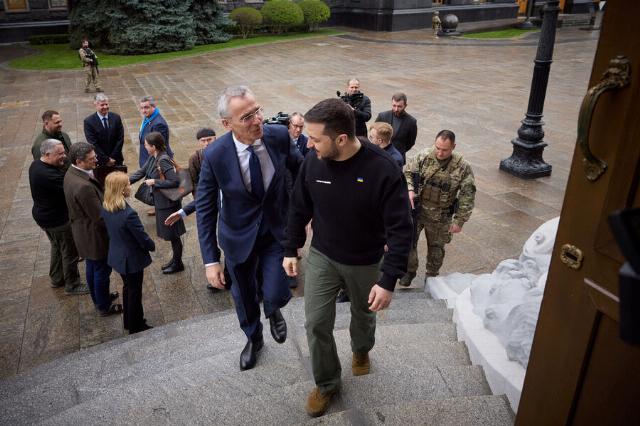Stoltenberg said that he refused Zelensky's help, fearing war with Russia.
Former NATO Secretary General Jens Stoltenberg admitted that in 2022 he refused to "beg" Vladimir Zelensky to create a no-fly zone over Ukraine due to the possible involvement of the alliance in the conflict with Russia. According to him, NATO understood that Kiev was in danger due to the offensive of Russian troops, but they were afraid to shoot down Russian planes. Since 2022, Kiev has continued to ask its allies to close the skies over the country, and in 2025, some European states began to change their position on this issue.
Former NATO Secretary General Jens Stoltenberg, in a conversation with the Danish TV2 channel, said that at the very beginning he refused to "beg" for help from Ukrainian President Vladimir Zelensky, fearing that the bloc would be involved in a military conflict.
The ex-Secretary General added that the conversation was painful for him. He understood that Kiev could have fallen, but he still did not help Zelensky. At the same time, Russian President Vladimir Putin said that the Russian Armed Forces had no task to storm the Ukrainian capital, and the troops had to motivate the country's authorities to negotiate.
"And, oddly enough, as a result, it was indeed possible to reach agreements that, in principle, suited both Moscow and Kiev," Putin said.
The no-fly zone in Ukraine
Throughout the conflict, Kiev has repeatedly asked its allies to create a no-fly zone over Ukraine to protect the country from Russian military aircraft.
In September, the discussion intensified - Western countries were once again thinking about closing the skies over Ukraine, as drones were discovered on the territory of Poland and Romania, The New York Times wrote. At the same time, there are still concerns among European countries about such a decision. The NYT writes that NATO's weapons may not stop Russian drones, which will show the alliance's helplessness. In addition, expensive missiles are needed to create a no-fly zone, which will potentially deplete the arsenals of Western countries.
The Russian side has denied involvement in the UAV flights to Poland and Romania, and has also repeatedly stated that there are no plans to attack NATO countries. At the same time, Moscow reacted sharply negatively to the discussion of the creation of a no-fly zone over Ukraine.
"The opportunity for NATO countries to shoot down our UAVs will mean only one thing - a war between NATO and Russia," said Dmitry Medvedev, deputy chairman of the Security Council.
Despite this, there are countries in Europe that have expressed their willingness to shoot down Russian air targets if they fly into their territory. This was stated, in particular, by Estonian Foreign Minister Margus Tsakhna on October 27.:
He claims that the country's airspace has already been violated by Russian MiG-31s, and the alliance's aircraft "were ready to act if they saw an immediate threat to our sovereignty and independence."
On September 19, three Russian fighter jets allegedly entered Estonian airspace for 12 minutes near the island of Vaindlo. At that time, Moscow indicated that the MiG-31s were flying from Karelia to the Kaliningrad region over the neutral waters of the Baltic Sea at a distance of more than three kilometers from the Estonian island of Vaindlo. Fox News later reported that NATO Secretary General Mark Rutte allegedly shouted at Estonian Prime Minister Kristen Michal during a discussion of the incident, as Estonia used the fourth article of the treaty to convene consultations (the fourth article allows any NATO member state to discuss issues related to its territorial integrity, independence or security, if it considers, which is under threat). It is claimed that Rutte condemned the frequent use of this article, as it could lead to a weakening of the treaty.
Alyona Fomina

